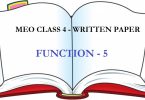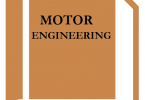61. Horizontal web plates which support the part of stern formed by radiused plates, between deck, is known as
- Panting stringer
- Breast stringer
- Breast hook
- Breast stiffener
ANS.: C
62. Bulkhead forming parts of the tanks on vessel are stiffened to withstands
- deck load from above
- dynamic forces while afloat
- hydrostatic pressure
- overpressure
ANS.: C
63. Curves of immersed cross-sectional area of a ship, plotted against draught for each transverse section , are known as
- Cross curves of Stability
- Displacement Curves
- Hydrostatic Curves
- Bonjean Curves
ANS.: D
64. In longitudinally framed double bottoms, in frame spaces where there are no solid floors, the brackets on tank sides and centre girder should not be more than ____apart.
- 2.5m
- 3.7m
- 3.8m
- 1.25m
ANS.: D
- Modern medium size single size skin bulk carrier are provided with _____ framing within double bottom, __________ framing within hopper tanks _________ framing on the side shell within the cargo hold
A. L,L,L
B. T,T,L
C. L,T,L
D. L,L,T
ANS.: D
- Relationship between CP, CB, CM is
- C-p=c-B*C-M
- C-M=c-p*c-B
- C-m*c-p*c-B=1
- CB=c-p*c-M
ANS.: D
- Plating on bulk heads are generally fitted _______ for better graduation of thickness
- Vertically in bulk heads
- horizontally in bulk heads
- vertically in transverse bulk head only
- Horizontally in transverse bulk head only
ANS.: B
- Define relationship between permeability, relative density, stowage factor of cargo.
- 1-(SF*RD)
- 1-1/(SF*RD)
- (SF*RD)-1
- (SF*RD)
ANS.: A
- Position 1, position 2, ventilation no need of min. height gasket
- 4.5, 2.0
- 4, 2.3
- 3.5, 2.3
- 4.5, 2.5
ANS.: D
- Velocity of advancement is defined as
- velocity of ship
- velocity of advance condition
- Axial velocity of propeller w.r.t adjoining water flow
- Axial velocity of propeller w.r.t fixed object
ANS.: C
- Type A vessel classification based on assignment of
- Min draught
- Min. depth
- min. free board
- min. freeboard length
ANS.: D
- Intercostals girder that vessel need to fitted transversely double bottom spaces whose breadth exceeds 20m
- 2port-2strbd
- 3p-3s
- 1p-1s
- none
ANS.: A
- Better freeing arrangement on tanker decks inform open rails for 50% length
- To ensure no S.W gets on deck
- Because of tanker has less freeboard
- A &B
- None
ANS.: B
- Tabular freeboard is based on what parameter (add depth for multi choice)
- Draught
- Length
- depth
- any
ANS.: B
- Shell expansion plan, ____________________
Ans.: D5 plate
- Most commonly used stern ____________________
Ans.: transom stern
- As per rules, all ships above 120 m length should have ____ in double bottoms
- transverse frame
- combination
- longitudinal
- any
ANS.: C
- Hull plating strakes are generally numbered as
- lettered from keel upwards and numbered from aft to forward
- numbered from keel and lettered from aft forward
- lettered from keel and numbered from forward to aft
- numbered from keel and lettered from forward to aft
ANS.: A
- Deck plating strakes are generally numbered as
- lettered from centre line to outward and numbered from aft to forward
- numbered from keel and lettered from aft forward
- lettered from keel and numbered from forward to aft
- numbered from keel and lettered from forward to aft
ANS.: A
- Pounding arrangements are usually fitted up to —— percentage of ships length abaft stem.
- 10
- 20
- 15
- 25
ANS.: D
- Position of centre of buoyancy of vessel is at
- centroid of the full cargo space
- centriod of underwater hull
- centroid of all masses
- centroid of hull where buoyancy is maximum
ANS.: B
- Water tightness and structural integrity of dry peaks are tested by
- Hose test
- By filling them with water up to water line
- Fill water up to load water line
- fill water up to 2.44mts above tank crown or max head which can come on them, whichever is higher
ANS.: B
- The greatest breadth of the ship measure to the inside of the shell plating is known as
- breadth extreme
- breadth absolute
- breadth moulded
- breadth perpendiculars
ANS.: C
- In longitudinal corrugated bulkheads, corrugations are ………….
- either horizontal or vertical
- only horizontal
- only vertical
- neither horizontal nor vertical
ANS.: B
- In transverse corrugated bulkheads, corrugations are ………….
- either horizontal or vertical
- only horizontal
- only vertical
- neither horizontal nor vertical
ANS.: A
- Most modern type rudders are,
- A single plate type
- double plate type
- single plate streamlined type
- none
ANS.: C
- Hull model relation is based
- Reynolds no of both hull and model are equal.
- frauds no of both hull and model are equal
- Rey and fraud no of both hull and model are equal
- none
ANS.: B
- The purpose providing tumble home is
- improve the appearance of ship
- help drain of water from deck easily
- reduce the volume of water coming on deck
- helps drain tanks to bilges
ANS.: A
- Collision bulkhead plate thickness
- 4-5
- 4-6
- 5-6
- 6-7
ANS.: C






An excellent initiative. Keep it updated with technology and regulations.